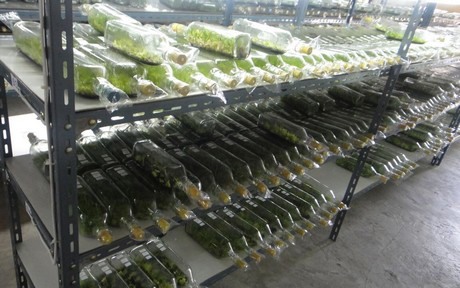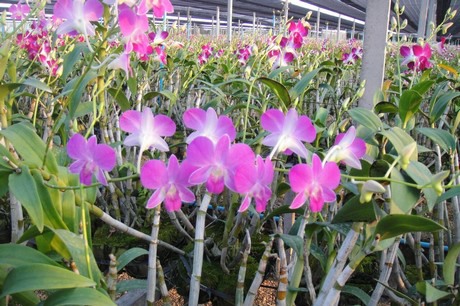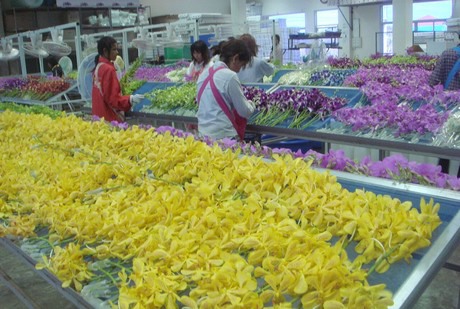
Dendrobium in flaks.
From pollination to germination
After the Dendrobium is pollinated, the orchid produces a seed pod. "It can take up to 3 months to produce a seed pod." says Vail. The pod is approximately two inches long and can contain millions of seeds. "This is because the seeds are like dust, they are among the smallest seeds in the world." For commercial practices, it is important to harvest the seed pods at the right time. Afterwards, they should be dried and the seeds need to be “blown” out into a sterile container, with a sterile nutrient substrate. "Then, you have to wait for germination, which can take up to 12 months" says Vail.

Mature dendrodium.
From sprout to finished plant
Once the seeds sprout, they need to be grown in sterile nutrient for several months. "The seeds, being so small, do not contain any nutrient for the baby orchid to feed on. The breeder must prepare a sterile nutrient substrate, inside a sterile flask for the baby plants. After the baby plants have consumed the food, new nutrient in a new flask must be prepared, and the plants must be transplanted", explains Vail. After the plants reach a size of 1 to 2 inches (2 to 5 cm), they can be removed from the sterile container and allowed to 'harden'. "Then they can adjust to life in the real world. If they survive this process, they will be 'planted' and allowed to mature. Then you have to wait another 6 to 24 months to see what colour and type of flower has been produced by the cross pollination."

Transportation of Dendrodium.
The testing phase
Then, if the flower looks good, it must be tested for vase life and durability during the shipping process. "If it fails the vase life test or the shipping test, two to four years have been wasted, and the entire crop is destroyed; thousands of plants at a time. If the trials are successful and the plant is chosen for commercial production, it may take another two to six years to reach a production of 10,000 to 20,000 plants", concludes Vail.
For more information:

Amy's Orchids
Amy
Email: [email protected]
www.amyorchids.com










